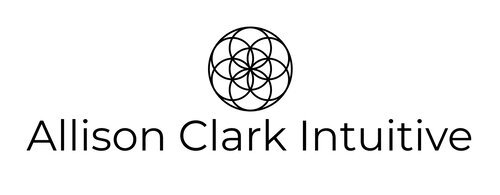The connection between histamine and period pain
Sneezing, sniffles, hives, headaches and dizziness— what do allergy symptoms have in common with PMS?
Many women don’t realize that a histamine intolerance may be the cause of their period pain.
Histamines are chemicals that are stored in mast cells which are a type of immune cell. Estrogen causes the release of histamine from mast cells in the uterus and ovaries. If you have higher estrogen levels, it can cause an increase in histamine levels and vice versa.
Common histamine intolerance symptoms
There are many symptoms of a histamine intolerance that are similar to the typical symptoms of an allergic reaction:
Flushing, sneezing, itching and hives, headaches, swelling, anxiety, runny nose, menstrual cramps, insomnia, skin problems like acne and eczema, irritability, dizziness, reflux, breast tenderness, anxiety
Improvement of symptoms in the luteal phase due to high progesterone levels
Headaches or migraines that get better after taking an antihistamine; menstrual pain; sinus pain; anxiety and mood swings during ovulation; raised red marks on the skin after scratching.
It is very common in women who suffer endometriosis.
You may also have a histamine intolerance if you notice an improvement in symptoms during the luteal phase (which comes after ovulation when progesterone levels should be higher compared to estrogen), headaches, or migraines that improve after taking an antihistamine; menstrual pain; sinus pain; anxiety and mood swings during ovulation; raised red marks on the skin after scratching.
Foods high in histamine
Fermented foods (kefir, yogurt, sauerkraut, vinegar, miso)
Cured meat and cheese
Food leftovers accumulate histamine
Alcoholic drinks
Walnuts, peanuts, cashews
Vegetables: eggplant, tomato, spinach
Fruit: avocado, banana, pineapple, papaya, citric fruit
Dried fruit (raisins, apricots, figs, prunes, etc)
Smoked fish
Chocolate
Collagen (supplement) and bone broth
Unfortunately, there are plenty of healthy and delicious foods that are high in histamine, and the truth is that it is very difficult to eliminate all foods high in histamine 100% especially since many are high in vitamins and minerals. So it becomes more about supporting the body to break down histamine faster so you don't have as many bothersome symptoms and avoiding a high consumption of high-histamine foods.
Foods that inhibit histamine production
Foods high in quercetin:
Apples, broccoli, asparagus, kale, capers, buckwheat, onion
Foods high in the flavonoid luteolin that also inhibits mast cell activity:
Peppers, olive oil, carrots, lettuce, artichoke, cucumber, celery, capers, pomegranate, thyme, rosemary, parsley, basil
Luckily there are foods that inhibit the release of histamine from mast cells. Although diet can reduce the symptoms of histamine intolerance quite a bit, it is important to find the root of your histamine intolerance. Diet is only one cause. An excess of estrogen and low progesterone levels is another cause, and women with menstrual problems or endometriosis often suffer from that. Stress whether physical or psychological is another cause or genetics. Some people have a mutation in the gene that codes the DAO enzyme that results in a slower break down of histamine. Especially if reducing high histamine food consumption doesn’t alleviate your symptoms, it’s best to work with a health practitioner, nutritionist or health coach to get to the root cause.
If you have an intolerance to histamine
If you suspect you have a histamine intolerance, it’s best to avoid consuming high histamine foods for 4 weeks and assess your symptoms and menstrual pain.
Consider taking supplements that inhibit histamine (see below)
Consider taking the DAO enzyme that breaks down histamine
Consider taking a probiotic (10-20 billion CFU) that carries any combination of: Bifidobacterium infantis, Bifidobacterium longum, Bifidobacterium lactis, Bifidobacterium plantarum, Bifidobacterium breve, Lactobacillus plantarum, Lactobacillus rhamnosus, Lactobacillus reuteri, Lactobacillus Avoid probiotics that carry: Lactobacillus casei, Lactobacillus bulgaricus, Lactobacillus delbrueckii and S. thermophilus
Supplements that may help
*It’s always recommended that you consult your healthcare professional before taking any herbs or supplements as they may be contraindicated due to your unique health status or medication use. Dosage is unique for each person. It’s also important to purchase your herbs and supplements from a reputable source as their quality and safety are usually not regulated.
Probiotics that inhibit histamine (see above)
DAO enzyme: breaks down histamine
Quercetin: prevents histamine release
Tumeric: inhibits histamine release
Vitamin C: it’s a cofactor for DAO and helps reduce histamine levels in the blood
Zinc: inhibits histamine release
Vitamin B6 upregulates the DAO enzyme
Pycnogenol: contains a polyphenol that inhibits histamine release
As always it’s important to discover the root cause of your histamine intolerance which could be a diet that’s high in high histamine foods, excess estrogen (also called estrogen dominance) compared to progesterone or low progesterone levels, mutation in the DAO gene, or an imbalanced gut microbiome or small bacterial overgrowth (SIBO) that inhibits DAO activity.
On an energetic level, I often see women who have a histamine intolerance or suffer from allergies is because they are not able to clear out energy that’s not theirs fast enough, in other words they are not grounded enough and don’t have an effective way of clearing out the energetic clutter from their space so their immune system overreacts to compensate. I also see it in women who are overwhelmed and stressed and have trouble keeping healthy boundaries. These are all things to consider in addition to the medical causes I’ve listed above.

